Our grandfather clock has been missing a finial for the thirty plus years since we got it from my grandmother. I recently had a clock repairman out to get the clock running. I decided it was time to make a finial. As the photo shows there will be a full moon tonight.
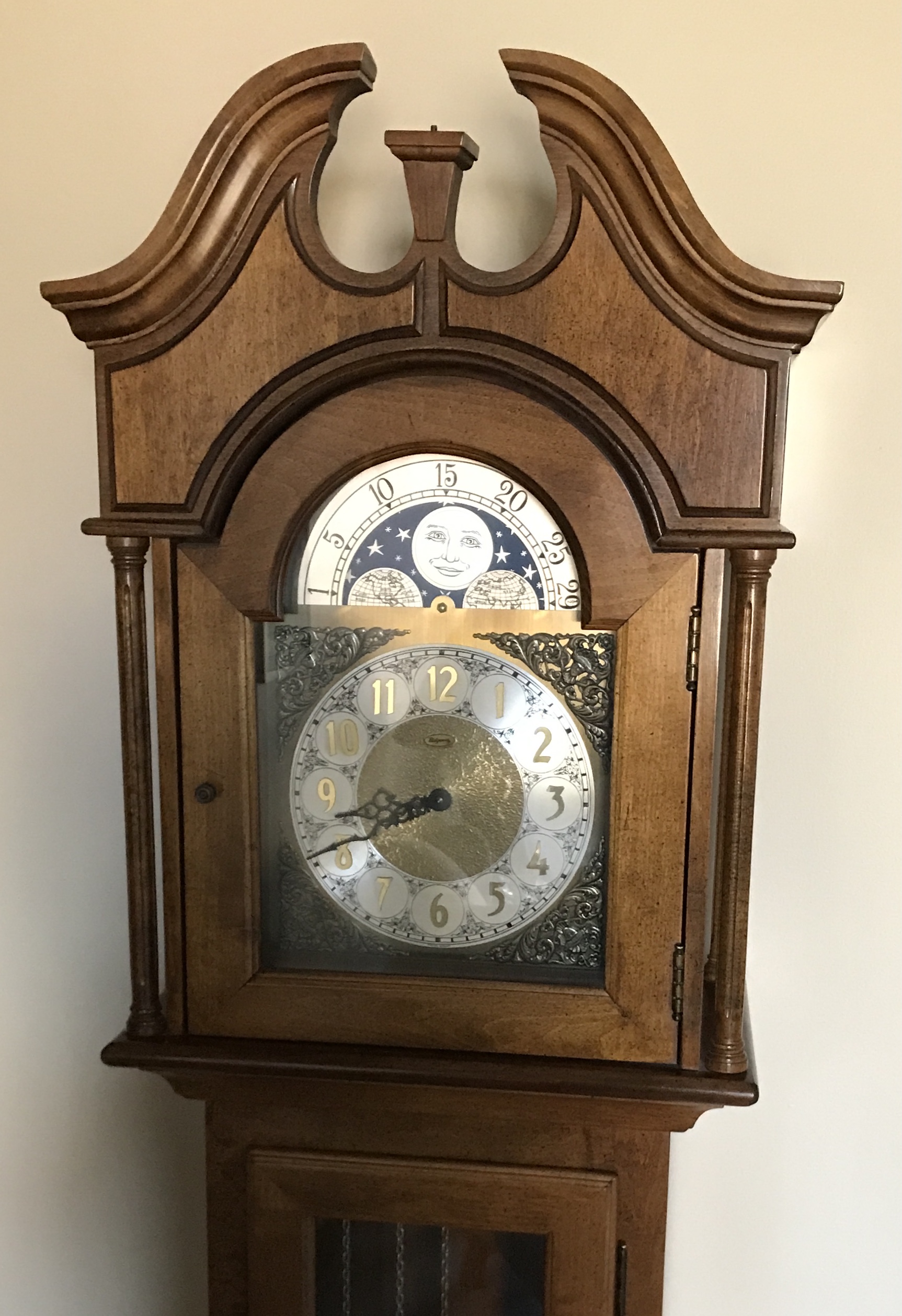
I am not sure what kind of wood was used for the clock. I believe it is maple, so a nominal 3/4" X 4" maple board was purchased at Menards. The shortest available was 6', so I will have a little extra. An 8 1/2" length was cut off with the circular saw and split down the middle on the table saw. The two halves were glued face-to-face.
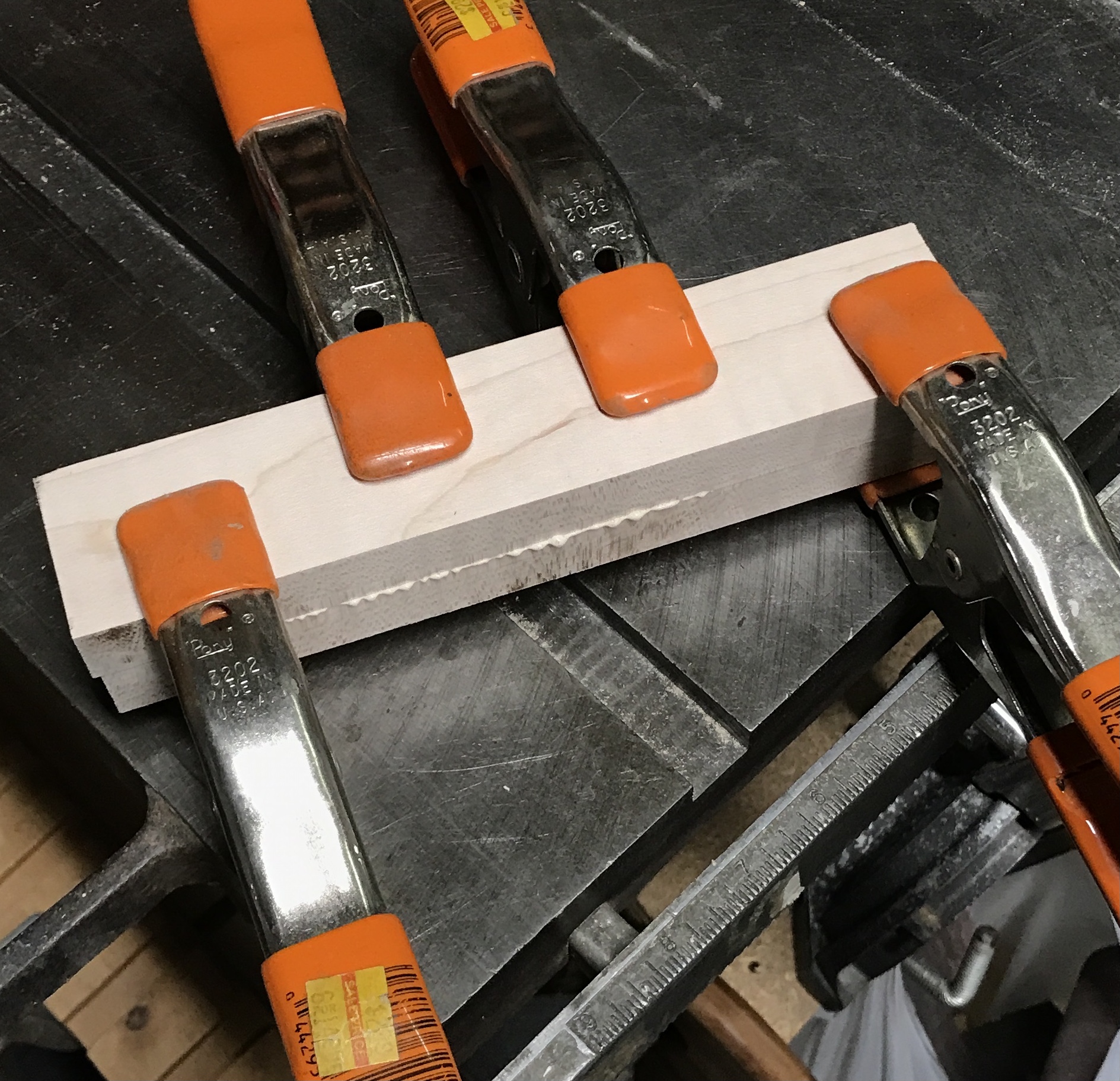
A finial design was found on the internet that looked appropriate. A rough sketch was drawn based on proportions from the internet example. The size of the drawing seemed appropriate so the proportions became measurements as shown on the right side. The diameter of the finial at various spots is shown on the left side. The plan is to cut it to approximate size on the lathe and then rasp/sand to the final profile. The overall height of the final finial will be about 5". The base the finial will rest on is 1 7/8" square.
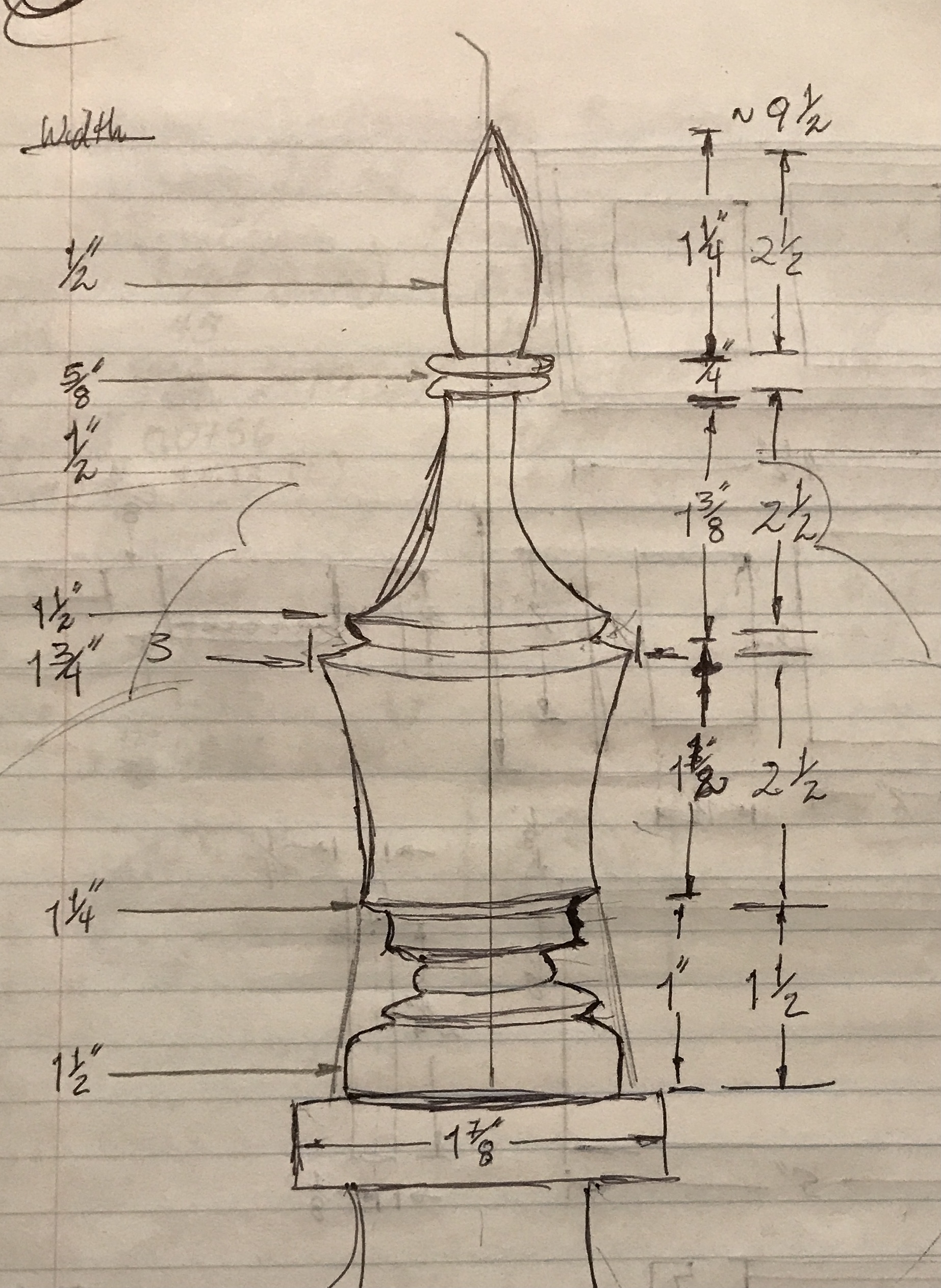
The glued up block was held in the four jaw chuck on the South Bend lathe. It was center drilled and supported with a live tailstock center. The block was turned round for most of it length. This left a 1 1/2" cylinder. This was marked with a pencil at places of transition in the plan. A 1/8" wide cutoff tool was used to reduce the diameter where needed. This was followed by a rasp, file and sandpaper up to 320 grit. There are no photos of intermediate stages of lathe work.
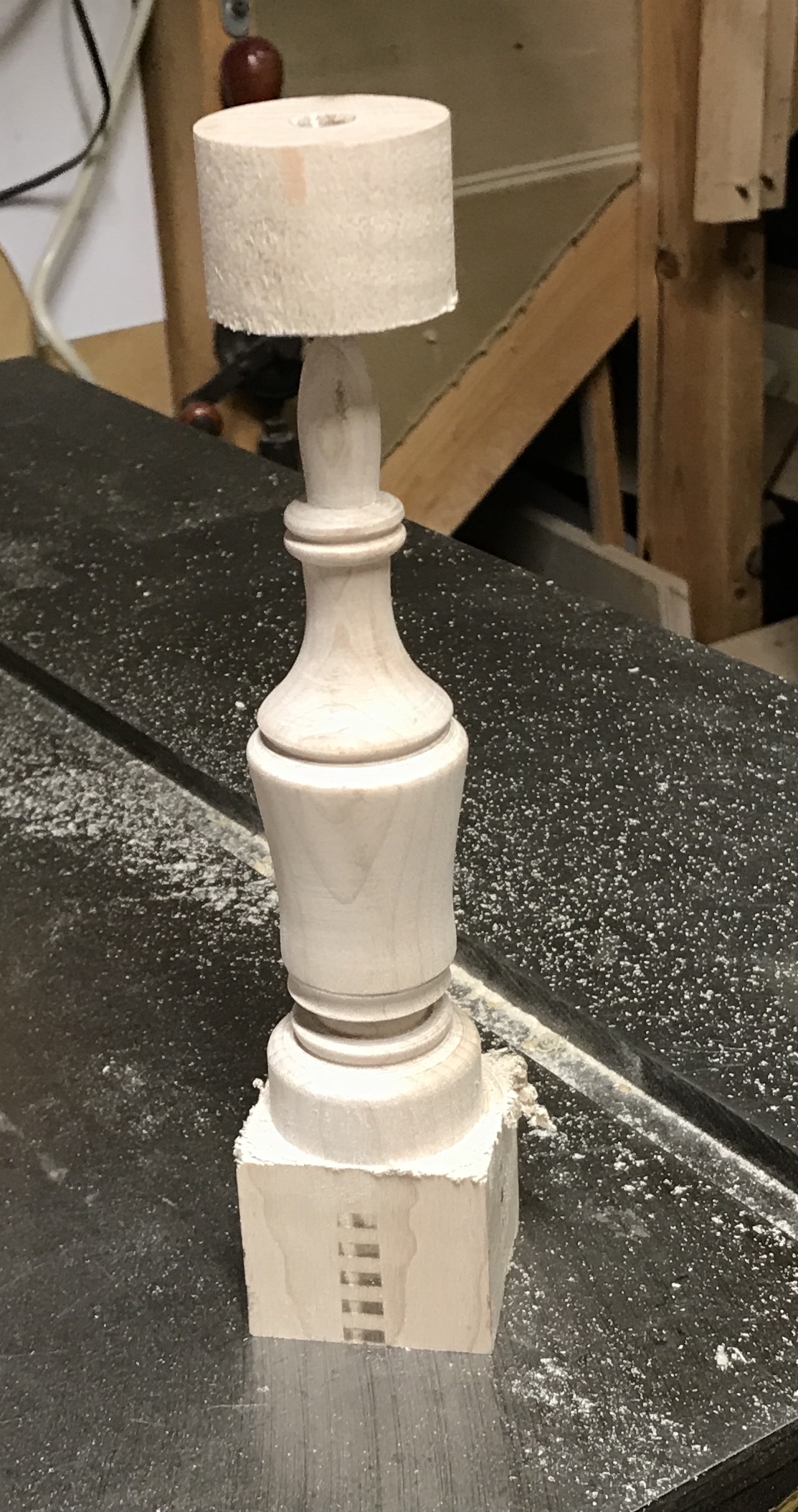
The square end was sawed off. The bottom was sanded. It was very difficult to sand it flat and perpendicular to its axis! The top cylinder was also sawed off and the new end was sanded round.
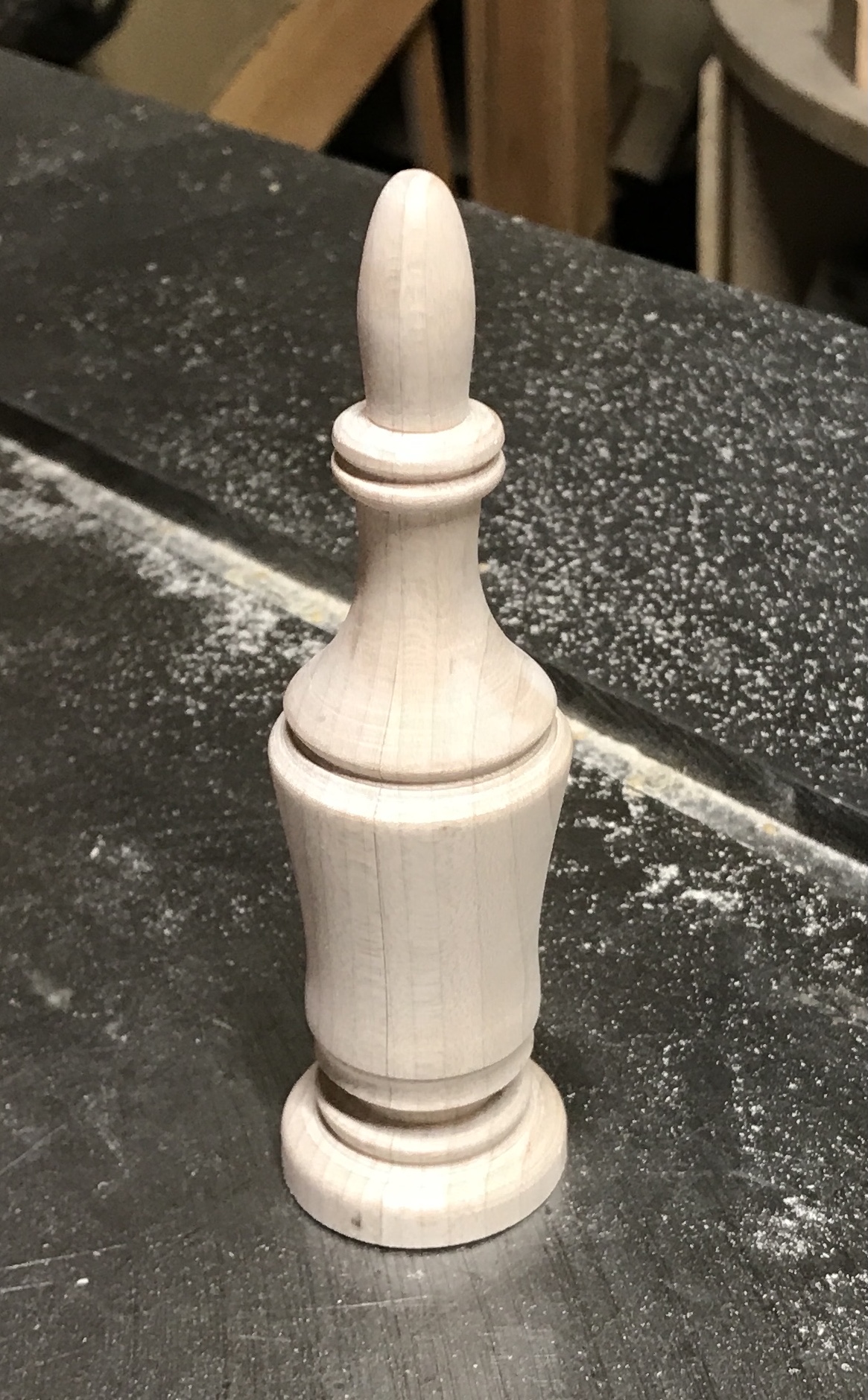
The base was center marked, punched, drilled, and tapped for an 8-32 screw. A stain to match the clock was needed. Holding the G&G table next to the clock showed the G&G was significantly more orange than the clock. A scrap of the maple was stained with the medium brown stain that was used to make up the G&G stain. When held next to the clock this looked too brown. A solution of one part orange to two parts brown was made and applied to the scrap. This looked like a close match. More was made up and painted on the finial, which is shown drying below.
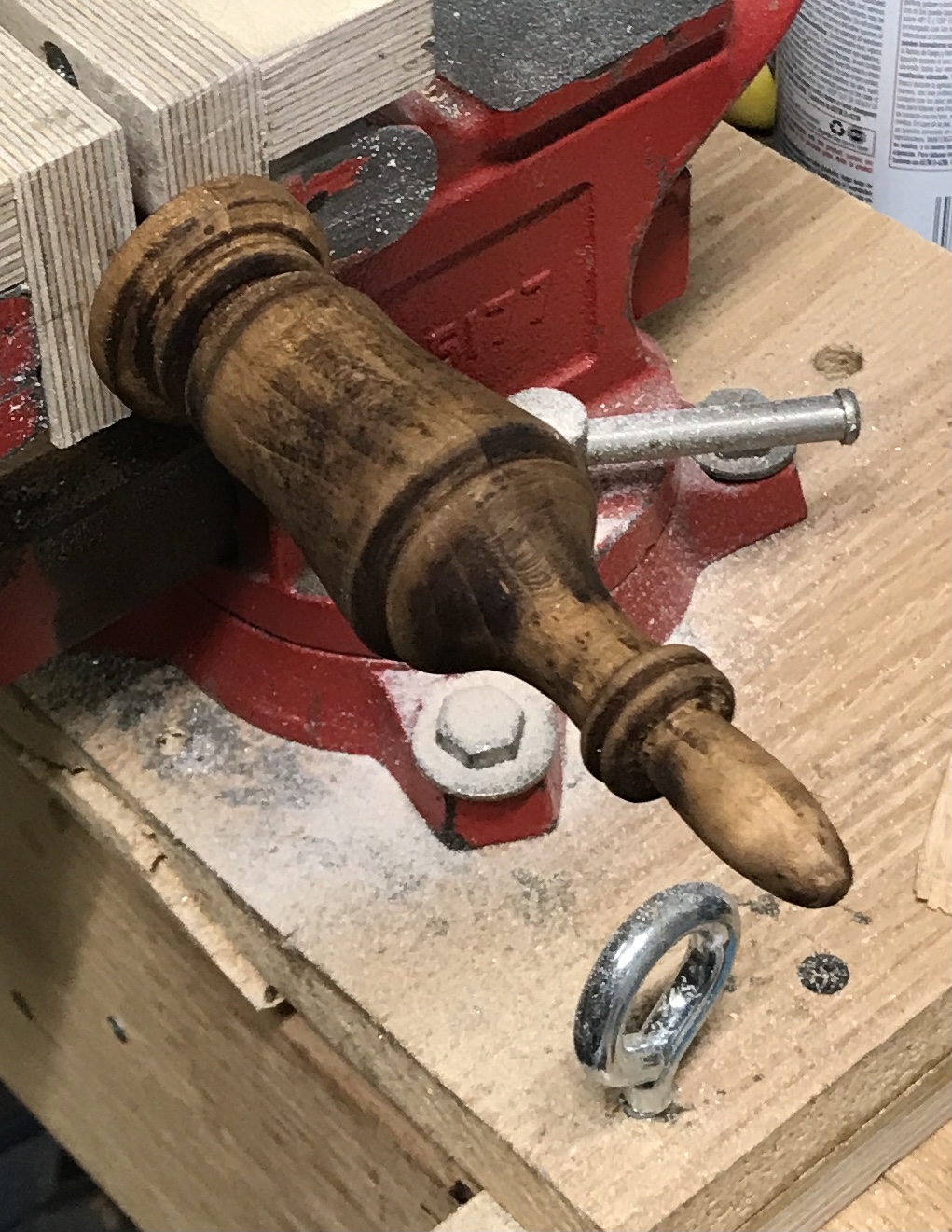
The stained finial seemed too dark so it was lightly sanded with 320 grit paper. Speckling was next. Black spray paint was sprayed into a small container. A toothbrush was dipped in the paint and the bristles scraped with a gloved finger. The web recommendation suggested using a screen. I found the screen worthless. After making sure the bulk of the paint was off of the brush it did a good job of scattering random drops of black on the finial. The picture below shows the result.
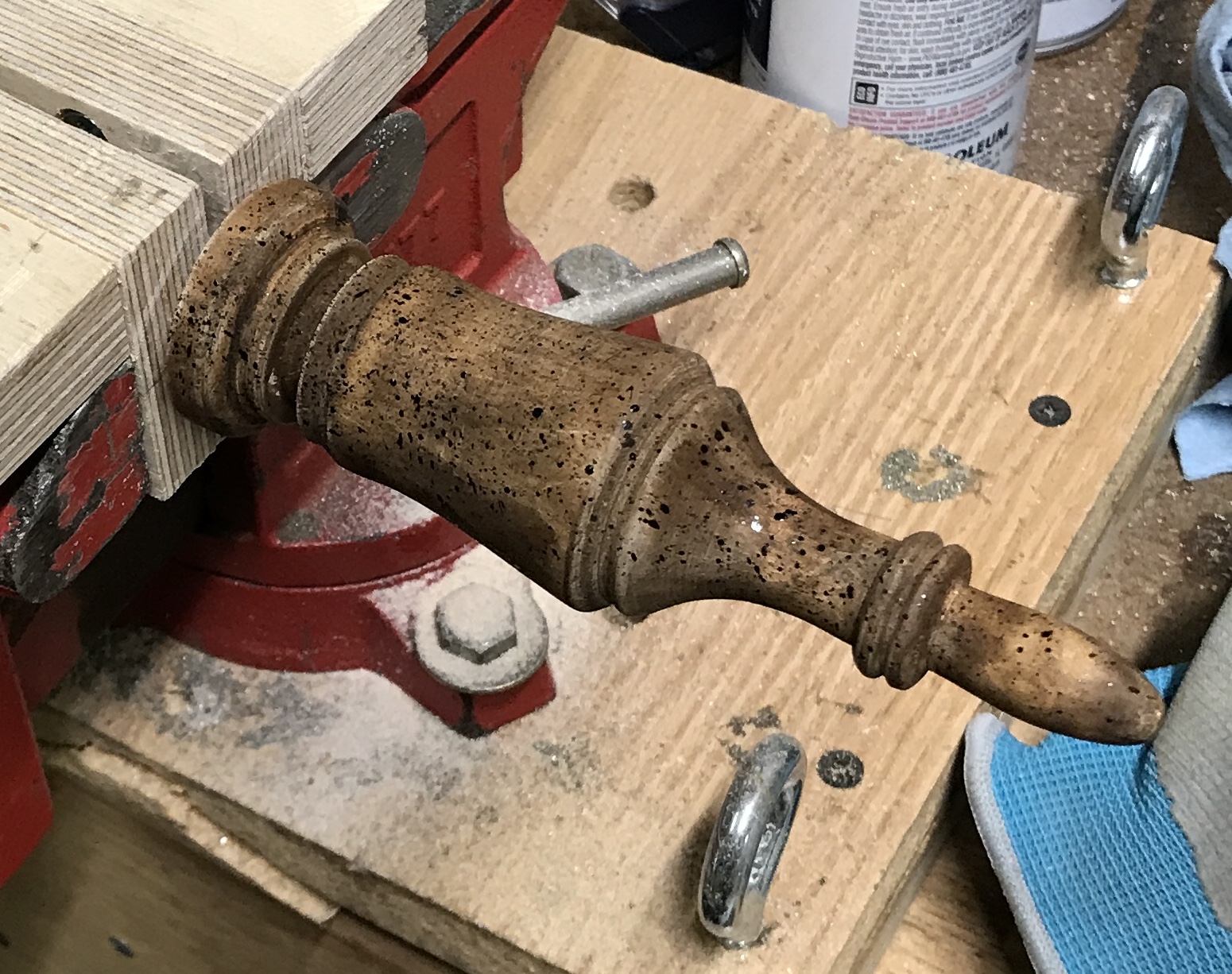
The first coat of water based semi-gloss varnish was applied this afternoon. After two hours or so the next coat will be applied. A bit of sanding will be done between coats. The finial already looks pretty good. After three coats the finial was installed this afternoon.
